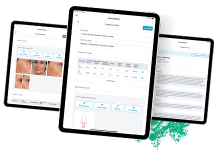State of the Industry Survey Summary

Key findings
Following a difficult winter and slower than expected
spring, partly due to the emergence of multiple Omicron variants, sector
businesses are finally starting to show again the more positive signs of
recovery that we first saw in September 2021:
• 44% of businesses are now making a small or good profit
(up from 30% in April). 36% are breaking even. However, one fifth of businesses
(20%, down from 27%) are still making a small or substantial loss.
• Raising prices is now a consistent trend: 62% raised their
prices over the last three months (up from 43% in April). A further 51% will do
so over the next three months (down from 58% in April).
• Reliance on external support has reached its lowest point
over the last two years, but is still high, with 50% of businesses (down from
58% in April) that are either partially or completely reliant on Government
support.
Staffing, recruitment and apprentices
• Recruitment intentions are showing slight improvements: in
the next three months, 27% are definitely or likely to take on new staff (up
from 17% in April).
• Over the last three months, 17% have cut back on
apprentices (similar to 16% in April). More positively, one fifth (21%)
(doubled from 9% in April) were definitely or likely to take on apprentices in
the next three months.
Looking to the future
• Business confidence in the sector has strengthened further
and is now back in line with the positivity we saw in September 2021.
Two-thirds (64%) of businesses are now confident of their survival (up from 57%
in April). However, it is still significant that a third (31%) are not sure
that they will survive until the end of the year.
• Growth intentions remain balanced, with 39% saying that
they intend to grow their business (similar to 38% in April), 45% intending to
remain the same size and a consistent 17% are planning to downsize or hand over
the business.
Key insights
1.
After enduring a difficult winter of the Omicron
BA.2 variant and a challenging spring of rising business costs, following two
years of pandemic and restrictions, sector businesses are finally starting to
show again the signs of recovery that we first saw in September 2021.
2.
2. Current indications of both business activity
and business confidence are back at levels seen in September 2021. Businesses
are busier than they were, but still not operating at full capacity, with
clients not returning for a full array of treatments with the same regularity
as they did before the pandemic.
3.
3. The overwhelming reliance on external support
that we saw in January has now eased. However, half of businesses are still
either partially or fully reliant on government support in some form to keep
their operations going. Business growth intentions are still balanced.
4.
4. This continues to be a challenging time for
businesses within the sector, with the continuing challenges of rising business
costs (energy prices and staff costs), coupled with the long shadow of business
debt that will take many businesses more than two years to clear.
5.
5. With the latest wave in Omicron cases (BA.4,
BA.5) and escalating costs set to continue through the year, the business
environment remains uncertain. However, the signs of recovery shown in this
latest set of results are very welcome.
6.
6. The recent NHBF report, Careers At The
Cutting Edge, outlined a ‘skills crisis' in the sector. The future of the
sector in terms of female entrepreneurship, employment, training and
apprenticeships remains a concern unless businesses are offered further
incentives and government support.
Background
Businesses have weathered the storm through the winter and
finally, after two years of lockdown and restrictions, are starting to show
signs of recovery.
Businesses seeking to recoup losses from a challenging
winter, then experiencing soaring costs of doing business and the latest
Omicron variants, find themselves once again dealing with increases in
appointment cancellations and reduced income.
The positivity in terms of business activity and survival
expectations is counter balanced by the enduring reliance on government support
and lingering business debts after businesses have worked their way through
reserves and dipped into personal savings.
The Local Data Company estimates that, up to May 2021, 16%
of the industry was lost to the crisis. Our surveys find a consistent figure of
17% of businesses deciding to downsize or close.
Businesses have benefitted from an array of support from the
UK and devolved governments over recent months, which carried them through the
winter. However, the sector recovery is still fragile and further support is
needed.
The NHBF has conducted its latest ‘state of the industry'
quarterly survey to gain an accurate reflection as to how the industry has
fared over the last quarter and is looking ahead to the autumn.
Responses
The survey received 499 responses between 27 June and 8
July. It gathered views from a good representation of businesses in the
personal care sector across all areas including city centres, town centres and
villages in England, Northern Ireland, Scotland and Wales.
Respondents included salon or barbershop owners, chair or
room renters, home-based business owners, mobile or freelance practitioners,
employers and the self-employed. The vast majority (87%) of respondents were
salon or barbershop owners, 13% are self-employed individuals and 12% involved
in the wider space renting, mobile and freelance part of the sector; this is
either the sole focus of their business or in addition to being a salon or
barbershop owner.
Full details of the responses to the individual questions
can be seen on request in the survey data document. Comparisons with data
collected through previous quarterly State of the Industry surveys conducted
over the last two years are also available.
The financial picture
More businesses are now making a small or good profit (44%)
(up from 30% in April). This is the highest since the fledgling recovery we saw
in September 2021. 36% of businesses are breaking 3 even. However, one fifth of
businesses (20%) (down from 27% in April) are either making a small or
substantial loss (Q7).
Businesses are experiencing a ‘perfect storm' of rising
energy costs, supply price inflation and increases to National Minimum
Wage/National Living Wage (NMW/NLW) and National Insurance Contributions
(NICs). In terms of direct impact on the business, there is most concern about
energy costs (77%), increased cost of trade suppliers (61%), increases to
NMW/NLW (43%), increases to NICs (32%) and increasing wage expectations (26%)
(Q10).
In response to these rising costs of doing business, the
most common actions that businesses are taking include removing any
non-essential expenditure (64%), putting up prices (59%), reducing costs/making
cost efficiencies (46%), holding off taking on new staff/apprentices (44%) and
reducing energy usage (37%) (Q11).
Looking ahead to the autumn, we predict that there will be
further signs of recovery. Despite COVID, barbers and beauty salons were both
in the top ten retail categories showing the most growth in numbers in the
first half of 2021, and the sector continues to show remarkably high rates of
business survival (NHBF Industry Statistics 2021).
Current situation
Following a difficult winter and slower spring, a more
encouraging 23% of businesses are now busy and 42% steady (65% combined, up
from 41% in April). Around a quarter (27%) of businesses still report that they
are quiet or really quiet (7%) (34% combined, down from 57% in April) (Q6).
0 10 20 30 40 50 Aug-20 Nov-20 Mar-21 Jul-21 Sep-21 Jan-22
Apr-22 Jul-22 Making a profit/loss/breaking even Yes, still making a good
profit Yes, we are making a small profit Breaking even Small loss Substantial
loss 0 10 20 30 40 50 Jul-21 Sep-21 Jan-22 Apr-22 Jul-22 How busy are you? Busy
Steady Quieter Really quiet Other 4 The trend towards increasing prices
continues. 62% of businesses raised their prices over the last three months (up
from 43% in April). A further 51% will do so over the next three months (down
from 58% in April). This is due to a combination of factors including the
difficult business environment, rising staff and business costs (Q8, Q9).
Reliance on external support has reached its lowest point
over the last two years, but is still high with 50% of businesses (down from
58% in April) either partially or completely reliant on Government support.
This has reduced from a high of 81% in January 2022, and is an improvement on
the figure of 66% from September 2021. A solid 50% say that they are not
reliant on continued support (up from 43% in April) (Q12).
Over the last three months, the vast majority of businesses
(88%) have not made any redundancies. Only 4% of businesses made staff
redundancies and, in the majority of cases, just one member of staff (Q24).
The picture with regard to staff hours is looking more
positive also, with only 24% of businesses being forced to cut staff hours in
the past three months (down from 43% in April and 58% in January). Three quarters
(76%) did not need to cut staff hours (Q21).
Staffing, recruitment and apprentices
Staffing and recruitment intentions remain relatively
static, albeit slightly more optimistic for the future.
The workforce has stayed the same over the last three months
for 57% of respondents (slightly down from 62% in April, but similar to 58% in
January). 28% reported a decrease (previously 31%) and 15% had increased staff
(doubled from 7% in April). Of those citing an increase, the majority (56%) had
added one member of staff and 42% 2-4 staff. Of those citing a decrease, 46%
had reduced staff by between one and 44% 2-4 staff (Q18-20).
In the next three months, 27% are definitely or likely to
take on new staff (up from 17% in April and matching 27% seen in September
2021), with two thirds (62%) saying that it was unlikely or that they
definitely would not (down from 75% in April). Of those intending to take on
staff, the majority (58%) would add one person and 40% 2-4 people (Q22, Q23).
The Careers at the Cutting Edge report outlined the
continued decline in apprenticeship starts in the UK. In line with this, over
the last three months, 17% have cut back on apprentices (16% in April).
However, more positively, one fifth (21%) (doubled from 9% in April) are definitely
or likely to take on apprentices in the next three months (Q25, Q26).
Looking ahead – barriers to growth and aspirations
The trend for turnover appears relatively static. Most
businesses (48%) expect their turnover level to remain the same over the next
three months (slightly higher than the 43% expressing this in April). 26%
expect it to increase slightly or significantly (similar to 28% in April), with
28% saying they expected a decrease slightly or significantly (in line with 30%
in April) (Q13).
Business confidence in the sector has strengthened further
and is back in line with the positivity we saw in September 2021. Two thirds
(64%) of businesses are now confident of their survival (up from 57% in April).
However, it is still significant that a third (31%, reduced from 52% in April)
are not sure whether they will survive over the next six months until the end
of the year.
Growth intentions remain balanced, with 39% saying that they
intend to grow their business either rapidly or moderately (similar to 38% in
April). A consistent 45% intend to remain the same size (similar level to 44%
in April). A consistent 17% are planning to downsize or handover the business
similar to April and January (Q15).
In terms of barriers to growth, 70% of businesses cite the
current economic conditions (down from 80% in January), difficulties in
recruiting more experienced staff (40%) (up from 26% in January), satisfied
with current size (20%), difficulties in recruiting new entrants or apprentices
(17%), wanting to stay below the VAT threshold (17%) and the risk of being
subject to more regulations (16%) (Q16).
Conclusion and Recommendations
The latest survey findings show that, after a long, hard two
years, the sector is finally recovering, as we see the return of the confidence
levels seen in September 2021.
The NHBF welcomes the Government support that has been
provided to businesses in the sector over the last two years or more. However,
with the sector still in a fragile place within a ‘perfect storm' of rising
staff costs, energy prices and supply price inflation, governments across the
UK should continue to monitor the sector's recovery.
The Careers at the Cutting Edge report makes it clear that
the longer-term future of the personal care sector depends on multiple
interventions, ensuring a pipeline of new talent and business owners being able
to afford to keep staff. Employment intentions remain relatively static and
there remain few incentives for businesses to take on apprentices in the
future.
We continue to call for:
• An increase in the 50% discount on business rates for
2022-23 in England and further discounts in the other nations, as well as
flexibility on repayments of CBILS (Coronavirus Business Interruption Loan
Scheme) and bounce back loans, to offer much needed support to those suffering
financial hardship.
• The reintroduction of the Job Retention Bonus (£1,000 per
eligible employee) through to the autumn of 2022 to sustain jobs and businesses
and restraint on further increases to the National Minimum Wage and
apprenticeship rate until the recovery is more sure-footed.
• More attractive apprenticeship incentives to employers,
focusing on the development of affordable apprenticeship schemes specifically
for small businesses in order to make it financially viable for them to recruit
and retain apprentices. In particular, finding ways to fund the gap between the
apprentice wage and minimum wage for apprentices aged 19+, which is currently
difficult for businesses to afford.
• Restraint from the Low Pay Commission when advising the
Government on rises to the National Minimum Wage (NMW) and National Living Wage
(NLW) in 2023/24, given the escalating costs around doing business.
• Government to lead a crack-down on informal tax evading
businesses in the sector that are driving down prices and undermining
legitimate businesses under pressure.
With continued support from each national Government,
further UK government support into the autumn and incentives for
apprenticeships, we are confident that the personal care sector will play an
important role in the UK's sustainable economic recovery, the future of
thriving high streets and community wellbeing.
Annex – net charts
The net trend is obtained by deducting the negative answers
from the positive, while discounting the neutral answers. For example, the
profitability net trend is found by deducting those reporting they are making a
loss from those who say they are making a profit, and not including those who
say they are breaking even.
The following charts show the tracking trends for Charts 1,
2 and 4 in the main summary.
Chart 1a shows the profit or loss trend, illustrating an
initial recovery from July to September 2021, fall in businesses making a
profit to January 2022 then a recovery again to July 2022.
Chart 2a below shows the business activity trend. The chart
shows a recovery in business activity to September 2021, a fall in January 2022
with a recovery again into July 2022.
Chart 4a below shows the trend for whether businesses expect
to survive over the next six months. After a low point in November 2020,
confidence increases to September 2021, falls in January 2022 after a difficult
winter and rises again to July 2022.








